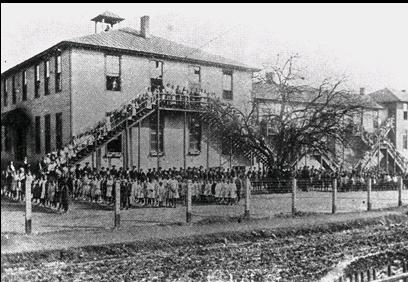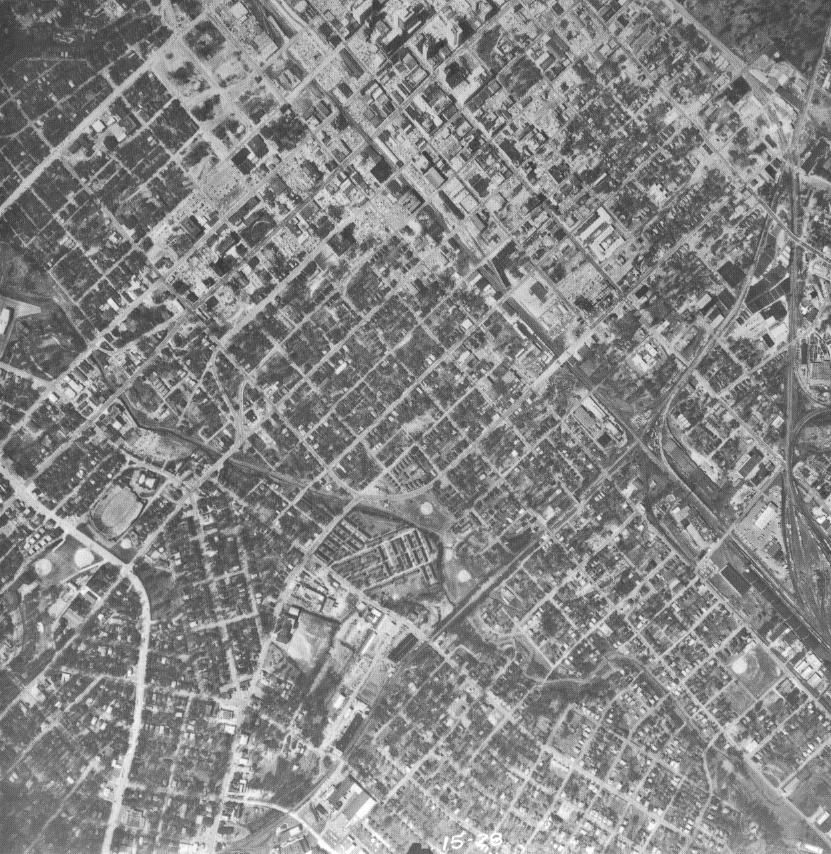Introduction:
Nestled between North Tryon Street and I-85 is one of Charlotte’s most infamous neighborhoods. While that is not the most accurate way to describe the neighborhood today, Hidden Valley’s recent past still hangs over the community. When development beginning in 1959, Hidden Valley was initially intended to house white middle class families. But with the destruction of neighborhoods like Brooklyn and the construction of freeways around Uptown carving up communities, many of Charlotte’s Blacks found refuge across the city. However, due to racism and lies, the influx of Black residents led to large swaths of the neighborhood’s white residents to move away; causing the city to ignore and neglect the neighborhood for decades. This neglect left Hidden Valley with a nationally bad reputation. But in recent years, things may be changing. With the completion of the Blue Line extension and the hard work of the Hidden Valley Community Association, the area surrounding Hidden Valley has seen more economic activity, development, and attention. But with all this happening, will Hidden Valley be able to maintain its identity, or will it change and gentrify like Southend? Or can Charlotte learn from its past? Stick around and while we explore Hidden Valley! With special guest, Frederick Murphy.
The Beginning of Hidden Valley:
With the growing national popularity of suburbs in the States, Hidden Valley was created in 1959 initially as a white middle class neighborhood. Developed and built in 1960 by George S. Goodyear as one of the largest subdivisions in the city. A fifteen-minute drive from uptown Charlotte, Hidden Valley contains over 4000 houses and is lined with streets named after characters from old European folktales. The neighborhood was planned to be wedged between Tom Hunter Road to the East, Sugar creek road to the West, Reagan Drive to the North, and Tryon St. to the south. One prime example is that the neighborhood’s middle school is off of Snow White Lane.
For 10 years Hidden Valley was exclusively white residents, but beginning in the 1970s, Black residents began to move in. The first Black couple to move into the neighborhood were Dr. Raleigh and Thelmetia Bynum. Around this time, the Charlotte-Mecklenburg School district was ordered to desegregate. A result of the Supreme Court’s decision in Swann vs Charlotte-Mecklenburg. Facing the fact that they’ll have to share spaces with Black people, large swaths of whites from across the city began to leave neighborhoods for the suburbs. Coupled with “Urban Renewal” and the destruction of historically Black communities, areas across the city were left less populated and neglected. This destruction of housing in predominantly Black neighborhoods led to many people looking for a new neighborhood, Hidden Valley among them.
Life in Hidden Valley:
Around the same time that the neighborhood’s first Black family moved into Hidden Valley the Hidden Valley Action and Awareness group was created. According to the Hidden Valley Community Association, the Awareness group was made up of “45 women who wanted to strengthen the relationships between black and white neighbors through socials, community improvement project and a monthly newsletter…”. This coincided with the Supreme Court’s decision to force Charlotte Mecklenburg schools to desegregate the district and bus students across the county.
Because of racist attitudes towards Black people, the influx of Black residents into Hidden Valley led to the neighborhood’s white residents to leave in what is known as white flight. White Flight is “the departure of white people from places (such as urban neighborhoods or schools) increasingly or predominantly populated by minorities…” White flight was fueled by ignorance and hate. Another factor pushing this was by banks in the form of redlining and the real estate industry spreading lies that essentially said when Black residents moved into the neighborhood, their presence will cause property values to drop. The federal and local governments played a role in this as well through their policies. Federally, the FHA pushed the idea of the suburbs and subsidized the construction of communities where the main draw was escaping the reality of sharing a space with people of color. These factors each played a role in pulling white residents away from neighborhoods across the county, Hidden Valley included causing a massive drain on neighborhoods and cities economically. This in turn led to a self-fulfilling prophecy where banks and governments would use the results of their efforts to continually ‘Redline’ Black and Minority neighborhoods, locking out any future investments into the neighborhoods and, overtime, diminishing the number of opportunities for its residents.
Sources:
About Us (hiddenvalleyclt.com)
History Before Us - The True American History | Black History
Home Again Foundation - Housing, Nonprofit, Charitable Organization (homeagainclt.org)
Brooks, D. (2021, July 16). Report Confirms Charlotte’s Lack Of Upward Mobility, Offers Priorities. WFAE 90.7 - Charlotte’s NPR News Source. Retrieved October 24, 2021, from https://www.wfae.org/local-news/2020-11-20/report-confirms-charlottes-lack-of-upward-mobility-offers-priorities.
Carter, B. (2012, February 16). Hidden Valley out front in mounting comeback Challenged neighborhood eyes revitalization. The Charlotte Post. Retrieved October 24, 2021, from http://www.thecharlottepost.com/index.php?src=permalinks/Hidden_Valley_out_front_in_mounting_comeback#:~:text=Developed%20in%201959%2C%20Hidden%20Valley,Neighborhood%20Quality%20of%20Life%20Index.
de la Canal, N. (2018, October 15). FAQ City: What Happened To Charlotte’s Earle Village? WFAE 90.7 - Charlotte’s NPR News Source. Retrieved October 24, 2021, from https://www.wfae.org/local-news/2018-10-09/faq-city-what-happened-to-charlottes-earle-village
Graff, M. (2020, January 27). Brookhill: How one of Charlotte’s most complicated and misunderstood developments could end up a success story. Axios Charlotte. Retrieved October 24, 2021, from https://charlotte.axios.com/193571/brookhill-how-one-of-charlottes-most-complicated-and-misunderstood-developments-could-end-up-a-success-story/
Kamin, D. (2020, August 27). Black Homeowners Face Discrimination in Appraisals. The New York Times. Retrieved October 24, 2021, from https://www.nytimes.com/2020/08/25/realestate/blacks-minorities-appraisals-discrimination.html
Vega, T. (2016, August 9). Blacks will take hundreds of years to catch up to white wealth. CNNMoney. Retrieved October 24, 2021, from https://money.cnn.com/2016/08/09/news/economy/blacks-white-wealth-gap/index.html
Wickersham, S. (2019, November 23). Hidden Valley residents continue to improve neighborhood’s reputation. WSOC TV. Retrieved October 24, 2021, from https://www.wsoctv.com/news/9-investigates/hidden-valley-residents-continue-to-improve-neighborhood-s-reputation/822465035/














